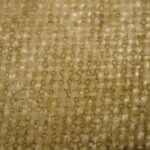Some days there’s nothing nicer than relaxing next to an open window. However, window screens can be fragile things. Small tears or holes in your screen can let insects in, and large tears or damaged screens can be an eyesore. Buying new screens can be expensive, and if you have an older home it can be difficult to find replacements. Fortunately, repairing a window screen is a relatively easy and inexpensive project if you know how to proceed.
Depending on your repair, you will need:
– A weatherproof household adhesive. For cloth screens, be sure that it is fiberglass friendly.
– A strong, clear weatherproof adhesive – such as tube epoxy or silicone sealer.
– A good pair of shears capable of cutting the sort of screen you intend to repair or install.
– A sharp utility knife.
– A ruler, wood block, or other edge.
– A screen roller, sometimes also called a spline roller.
– Extra screen material.
– A small tool, like a needle, fine screw driver, or nail.
Small Holes and Tears
Small holes and tears in your screen caused by wear and tear are easy to repair, but differ somewhat depending on whether or not you use metal or cloth screens.
A small tear in a cloth screen can be repaired with a small amount of weatherproof household adhesive. Just brush or dab it on so that the fibers of the screen stick together, let it dry, and you’re good to go! For a similar repair with a metal screen, use a small tool (like a fine screwdriver, a needle, or even a nail) to straighten the wires back into place, then seal with two-tube epoxy or silicone sealer.
Patching
If the damage is too large or irregular to easily glue back together, you might also consider patching it. In general, to patch a screen, you’ll need to remove it from your window first.
For cloth screens, cut a piece of spare screen fabric large enough to easily cover the hole, then lay it over the damaged area. Affix it in place by brushing in front and back with household adhesive and let it dry overnight before reinstalling the screen. As with gluing a rip or tear, be sure that any adhesive you use to patch your screen is weatherproof.
To patch a metal screen, begin by cutting a piece of screen large enough to cover the hole, and include about one half inch extra around each edge. Then, carefully remove about two or three strands of screen from each edge so that your patch has about half an inch of free wire extending from each edge. Use a ruler or a table edge to bend these wires so that they are at a ninety degree angle with your patch. Press the patch against your damaged screen so that these wires press through, and then bend them down toward the center of the patch. This is typically best done on a flat surface. When you are finished, you may choose to use a strand of wire to “sew” the patch to the screen, or to use epoxy or silicone sealer to fix it in place.
Replacing the Screen
Large tears and damage to a screen that separates it from its frame generally calls for a replacement of the screen mesh itself. Most modern aluminum screens hold their mesh in with a piece of vinyl called a “spline” that runs along the edge of the sash.
Remove your screen from the window and lay it flat so that the spline is facing up. Using a small tool, gently pry the spline up from its channel and remove it. Try not to yank hard on, stretch, or break the spline. When you are done, remove the old screen from the sash. Lay a sheet of screen over the sash and trim it so that you have about an inch of screen extra on each edge.
For metal screen replacements, you’ll need to shape the mesh before reinstalling the spline. To do this, use a screen roller to press an edge of screen (remembering to keep that inch of excess!) into the spline channel. Work slowly and carefully to ensure that you keep the screen lined up, and to avoid tearing the screen. At each corner you will want to make a diagonal cut in the excess screen to relieve tension in the mesh.
When you have completed an edge, slip the spline into place over the channel, then use the screen roller to press it into place. Again, work slowly, both to avoid damage to the screen mesh and to avoid stretching the spline.
If you are replacing a screen with a cloth mesh you can install the spline directly without shaping the screen. However, be sure to work slowly and carefully as cloth mesh can be more fragile than a metal screen, and shifts more easily while you’re working. Remember to make relief cuts at each corner as you would with a metal mesh.
When the spline is in place, use a sharp utility knife to cut away the excess screen.
Damaged Frames
Metal screen frames are difficult to repair. If a frame is badly damaged, it’s generally not worth the effort, and best to replace it outright. A slightly bent frame can be gently pushed back into shape, but may not seat well in the window afterward. If you’re unsure, or need to have a frame replaced, start at your local glass repair shop. You can also purchase screen frame kits at most hardware stores.







